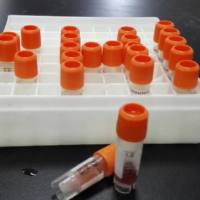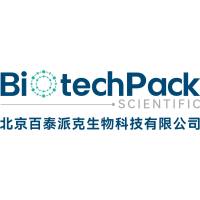Hiro Hirai BAC-FISH Protocol
互联网
Hiro Hirai 's BAC-FISH Protocol
Overview
This protocol is a modification of the standard FISH protocol published by Hiro Hirai and Phil LoVerde in Parasitology Today (1995, 11(8) p 310-314) that has been optimised for use with BAC probes and should be read in conjunction with the published protocol.
This protocol uses the BIOPRIME reaction kit from GibcoBRL to prepare biotin-labelled BAC DNA which is detected using FITC-Avidin (Vector Labs, DCS grade). Reagents from other manufacturers may work equally well but have not been tested.
(1) Labeling of BAC clones
(a) take 10µl of standard stock solution of purified BAC clone and denature by boiling for 5 minutes, then snap cool in ice-water mix
(b) prepare 50 µl of labelling mixture as follows:
10µl denatured DNA
5µl 10x biotinylated dNTP stock (BIOPRIME reaction kit)
20µl 2.5x buffer solution (BIOPRIME reaction kit)
14µl ddH2 O
1µl Klenow enzyme (BIOPRIME reaction kit)
(c) incubate at 37o C for 3 hours
(d) stop reaction by heating to 65o C for 10 minutes
(2) Ethanol precipitation
(a) add together:
labelling mix (from 1.d) - 50µl
147µl ddH2 O
74µl 4M NaCl
2µl salmon sperm DNA (10µg/µl stock)
467µl cold (-20o C) ethanol
(b) keep at 4o C for 60 minutes
(c) centriufuge at 15,000 RPM at 4o C for 5 minutes
(d) remove supernatant, briefly dry pellet and then resuspend in 40 µl ultrapure formamide (Boehringer Mannheim or Intergene (Cat. No. S4117))
(3) Hybridization
(a) hybridization buffer:
15µl 20 x SSC
45µl 30% Dextran Sulphate
(b) hybridization mixture:
30µl hybridization buffer (from 3.a)
20µl labelled probe redissolved in formamide (from 2.d)
(c) denature the hybridization mixture at 72o C for 10 minutes
(d) denature the chromosome spread as folows:
0.05M NaOH in 2 x SSC - 4.5 minutes
70% ethanol - 5 minutes
99.5% ethanol - 5 minutes
air dry
(e) apply the denatured probe to the chromosome spread, cover with parafilm (acting as a coverslip) and incubate in a humid chamber at 37o C for 12-16 hours
(4) Post-hybridisation treatment / detection
(a) wash:
40% formamide (standard grade) in 2 x SSC at 45o C for 10 minutes
2 x SSC at 45o C for 10 minutes
2 x SSC at room temperature for 10 minutes
(b) immersion and blocking:
BN buffer (0.1M NaHCO3 / 0.1% NP-40) or BI buffer (0.1M NaHCO3 / 0.1% IGEPAL CA-630 (Sigma I-3021 (as NP-40 may no longer be available))) for 5 minutes
5% non fat milk in BN or BI buffer for 10 minutes
(c) detection:
50µl of 5% non fat milk in BN or BI buffer containing 4µg FITC-Avidin (Vector Labs, DCS grade) for 60 minutes
(d) wash in BN or BI buffer, 2 x 10 minutes, with gentle shaking
(e) mount in antifade solution containing PI and DAPI as counterstains








